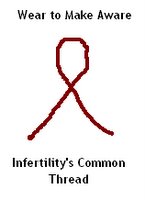A couple of you have asked how I worked the short rows on the back of the dressage jacket. It was my first time trying this so I pretty much fudged it, but I'll do my best to describe the process. I admit the maths did give me a slight headache at the time but it wasn't really that hard, I just really over-think things!
The idea is that I have a sort of sway back, but above my waist not below it. I usually tuck out between 1 and 2 inches on the centre back seam of my sewing projects so I wanted to get the same effect on the back of the cardigan.
First I figured out how many rows less I wanted in the middle of the back (it's sort of the opposite of normal short rows, where you are adding more eg. at the bust). In this case it was only 6 rows (about an inch), when you do your calculation you will want this to be an even number, let's call it a (can you tell I work with statistics?).
Each short row you work is actually a pair of rows (there and back) so you need to divide a by 2 to work out how many pairs of short rows to work, in my example this works out to be 3, we'll call it b.
Now, take the number of stitches in half the back (for example, full back=80 stitches therefore half back=40 stitches), continuing the theme we'll call it c.
Divide c by b+1 (example 40/(3+1)=10 stitches). This is how long each of your short rows will be, from now on referred to as d. The turns will be evenly spaced either side with a wider straight section in the middle.
Now, knit to the waistline and work the following (my example in brackets):
Short row pair 1: work d (10)stitches, turn and work back (or wrap and turn if that's your thing - it is mine).
Short row pair 2: work d*2 (20) stitches, turn and work back.
Short row pair 2: work d*3 (30) stitches, turn and work back.
Repeat until you have completed the required number of short row pairs (b).
Now work across the whole row and repeat the exact same short row process on the other side of the piece.
Here is my craptastic PowerPoint representation of how it looks so you can visualise the process.
Then finish the back as instructed. Make sure when you measure the length of the back that you measure at the side seam rather than the centre back - otherwise your back will come out longer than your front!
The centre back of the cardigan will scoop upwards when it's laid flat but looks straight across when it's on the body.
Of course this is easy on a simple pattern like stocking stitch or rib, but I I have a lace project in the queue and I am not sure if I'll be able to figure that one out!
I hope this helps, I really am not a knitwear designer so if I can do it anyone can! Good luck.
Wardrobe Sewing 2025
2 days ago







3 comments:
Thank you for this post. When you said previously that you had added short rows, this is what I had in mind that you had done.
I've only been knitting since Jan. '09 and I tend to approach knitting sweaters the way I do sewing shirts. Not that I've actually finished a sweater or anything - just kind of looked at the patterns. :)
WOW! I can only hope to be able to do this someday. Love this sweater/jacket.
holy moly that's complicated! But the fit is fantastic, and that's what makes it worth every one of the $$ you spent on the yarn
Post a Comment